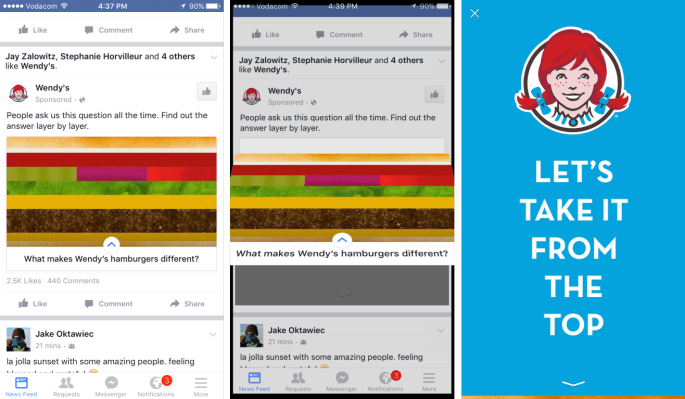Instant Articles, meet Instant Ads. Facebook wants to give advertisers an immersive way to reach people without making them leave the social network. So today it officially launched its ad Canvas for all advertisers. When users click a Facebook News Feed ad connected to Canvas, it opens a full-screen, rich media page inside of Facebook rather than forcing users to wait for a mobile website to load.
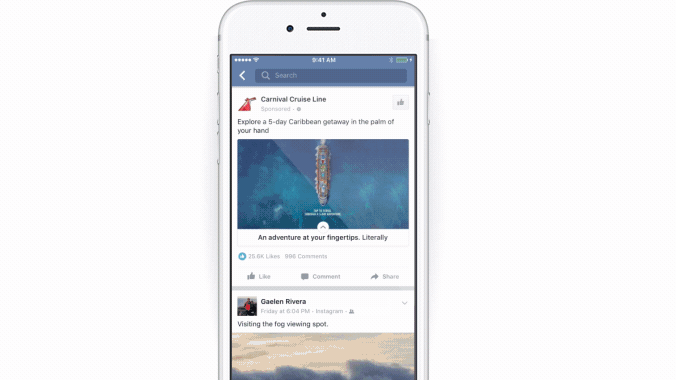
Last year Facebook started testing Canvas, which I called Instant Articles for ads. The impetus was that mobile sites have tripled in size since 2011, leading to five to ten second load times users don’t want to sit through to see an ad. The types of rich media marketing experiences that people actually remember load far too slow on mobile. So Facebook built the endpoint of ads into its own app so it can pre-load and show them in about one second.
Canvas removes constraints that low-power mobile sites put on content. Facebook Canvas allows interactive elements like animations, carousels, product catalogs, tilt-to-view images, and videos. Canvases appear linked to from News Feed ads on iOS and Android, and Facebook is evaluating how to expand this to other versions and apps such as Instagram.
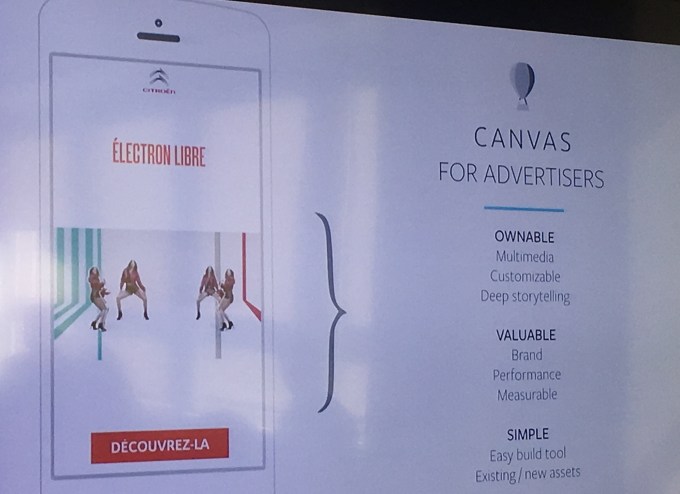
Brands can build Canvas ads with a self-serve tool. There’s no code required. Facebook’s design tool lets them just drag around images, GIFs, videos, and more, then set attributes and start showing their ad. Facebook ad exec Mark D’Arcy joked that “The only thing they can’t make, really, is excuses.”
Advertisers can sign up to use Canvas here. There’s no additional cost to build a canvas ad. Businesses just pay for the same News Feed ads as always, but get to build a better destination where they lead. Different versions of a Canvas can be targeted to different demographics just like normal Facebook ads.
Facebook says Canvas won’t lead to more ads on Facebook. Users can identify Canvas ads by a little upwards arrow that denotes that the full-screen experience will unfold.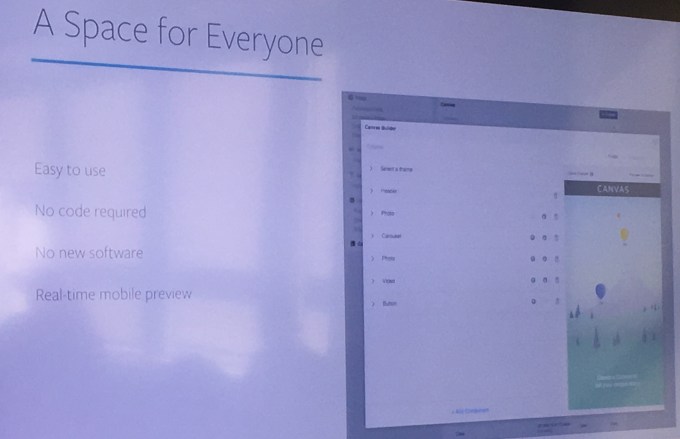
Facebook says the early tests of Canvas have shown users actually want to stick around and experience the ads. 53% of users that open a Canvas view at least half of it, and the average view time is a stunning 31 seconds. The top Canvas ads can see more than 70 seconds of view time per user.
In this Canvas campaign where Wendy’s deconstructed a cheeseburger and let people scroll, swipe, and see GIFs of different ingredients received 65 seconds of average view time. 2.9% of viewers even got all the way to the bottom and used the Wendy’s restaurant locator.
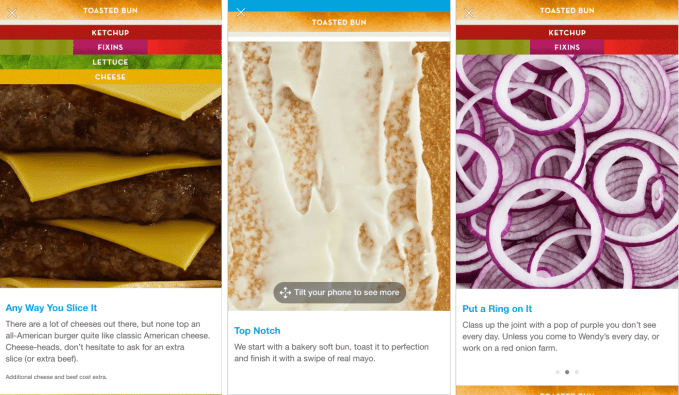
Storytelling through ads has been a big push for Facebook recently as it tries to squeeze out more revenue per user, especially developing world markets. Last year it launched the Creative Accelerator to teach brands how to build ads for slow mobile networks and feature phones, and launched a special Slideshow ad format that mimics video but loads quickly. But Canvas is the other end of the spectrum — high-bandwidth ads for the first world.
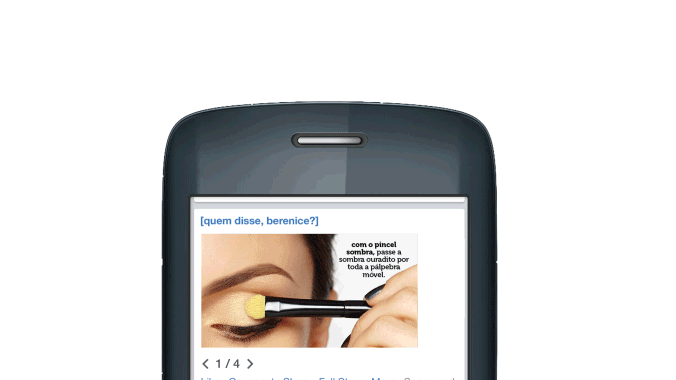
By giving advertisers a richer format to market through, it can make sure viewers remember them. While lots of platforms are competing for ad dollars, none have innovated in the destination those ads lead to. And since Canvas doesn’t frustrate users with long load times or tempt them to leave Facebook through the browser, the social network can keep them rattling around and seeing more of its News Feed ads while they connect with friends.
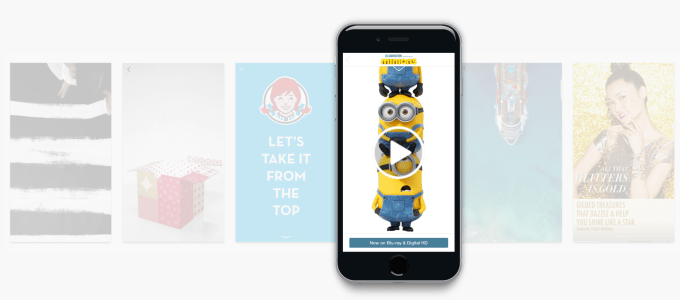
Additional reporting by Anthony Ha
